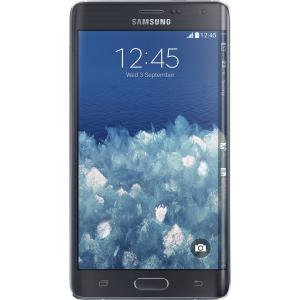Flash firmware on Samsung Galaxy Note Edge
Mobiles >> Samsung >> Samsung Galaxy Note Edge| Specifications | Reviews | Secret codes |
| Unlock phone | Root phone | Bypass FRP |
| Backup | Flash Firmware | Screenshot |
How to flash Samsung Galaxy Note Edge?
Why reinstall the firmware?
Errors in the Android OS start to appear regularly.
Some installed applications stop opening.
Some programs from the Play Market do not start.
The phone turns off for no apparent reason.
The phone started to work slowly.
You want to update the firmware, as it does not suit you in terms of functionality.
Where can I find the firmware?
On the official website of the phone manufacturer.
On sites where third-party developers and phone manufacturers post custom or official OS.
What should be done before installing the firmware?
Back up your contacts and user data and transfer it to your computer.
Insert SD card. An SD card is needed to write firmware to it.
Find information about your smartphone model.
Fully charge your phone. If the battery runs out during boot, the device will no longer turn on.
Find and download the archive with Firmware. Place it on the SD card.
Installing TWRP Recovery
Download the Official TWRP App to your phone from the Play Market. And install this app.
When you start the application for the first time, you must agree to install the firmware, as well as agree to grant the application Superuser rights and click the 'OK' button.
On the next screen, select 'TWRP FLASH' and give the application root rights.

On the main screen of the application, click 'Select Device', and find your phone model.
After selecting a device, the program redirects the user to a web page to download the corresponding image file of the modified recovery environment. Download the suggested *.img file.
After downloading the image file, go to the main screen of the Official TWRP App and press the 'Select a file to flash' button. Then we tell the program the path where the file loaded in the previous step is located.
Press the 'FLASH TO RECOVERY' button and confirm your choice, press 'OK'.
When the message 'Flash Completed Succsessfuly!' appears. Click 'OK'. The TWRP installation procedure is now complete.
Copy the firmware and other necessary files to the SD card.
Insert a SD memory card into the phone.
To reboot into recovery, you need to enter the menu accessible by pressing the button with three stripes in the upper left corner of the main screen of the application. Select the 'Reboot' item, and then click on the 'REBOOT RECOVERY' button. The phone will reboot into the recovery environment automatically..
Firmware via TWRP

Before flashing, you need to delete all user data from the phone, this will avoid many problems. press 'WIPE' on the home screen.
Now you can start flashing. Click the 'Install' button.

The file selection screen appears. At the very top is the 'Storage' button, select the location where the firmware file is located.
Select the location where the files were copied. Press the OK button.

Find the file we need and click on it. A screen opens with a warning about possible negative consequences, you need to check the item 'Zip signature verification', which will avoid using corrupted files when writing to the phone's memory sections.
The procedure for flashing the phone will begin, accompanied by the appearance of inscriptions in the log field and the movement of the progress bar.
When the procedure for installing the firmware is completed, the message 'Successful' appears on the screen.
Summary: OS: Android (4.4); Dimensions: 3072 MB RAM (Quad-channel, 800 MHz) / LPDDR3; Built-in storage: 32 GB; Storage expansion: microSD, microSDHC, microSDXC up to 64 GB; Capacity: 3220 mAh; Type: Li - Ion; Music player: ; Filter by: Album, Artist, Playlists; Features: Album art cover, Background playback; Supported formats: MP3, AAC, AAC++, eAAC+, FLAC, WMA, AMR, OGG; Video playback Supported formats: MPEG4, H.263, H.264; Speakers: Earpiece, Loudspeaker; YouTube player: Yes; Browser: Google Chrome; supports: HTML, HTML5; Built-in online services support: YouTube (upload), Picasa/Google+; GSM: 850, 900, 1800, 1900 MHz; UMTS: 850, 900, 1900, 2100 MHz; FDD LTE: 800 (band 20), 850 (b ...
Comments, questions and answers on the flash firmware Samsung Galaxy Note Edge
Ask a question about Samsung Galaxy Note Edge




